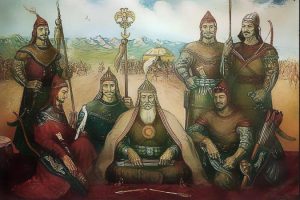The Srebrenica massacre stands as one of the most devastating events in recent history, serving as a stark reminder of the atrocities committed during the Bosnian War. This tragic event took place in July 1995, when Bosnian Serb forces overran the United Nations (UN)-designated “safe area” of Srebrenica, resulting in the mass murder of thousands of Bosniak (Bosnian Muslim) men and boys. This article aims to provide an overview of the Srebrenica massacre, its historical context, and the ongoing quest for justice and reconciliation.
The Bosnian War, which lasted from 1992 to 1995, was a brutal conflict that ensued following the dissolution of Yugoslavia. Bosnia and Herzegovina declared independence, triggering a power struggle between Bosnian Serbs, Croats, and Bosniaks. Srebrenica, a predominantly Bosniak town, became a symbol of resistance against Serbian aggression. In response, the UN declared Srebrenica a “safe area” under their protection in 1993.
Despite its designation as a safe area, Srebrenica came under siege by Bosnian Serb forces commanded by General Ratko Mladić in July 1995. The UN peacekeeping forces stationed there were vastly outnumbered and unable to prevent the impending tragedy. On July 11, Bosnian Serb troops began the systematic execution of Bosniak men and boys, forcibly separating them from their families. The victims were transported to various execution sites, where they were summarily shot and buried in mass graves. Estimates suggest that over 8,000 Bosniaks were killed during the massacre.
The Srebrenica massacre shocked the world and prompted international condemnation. The UN and the international community faced significant criticism for their failure to protect the innocent civilians in the safe area. It led to a reassessment of UN peacekeeping operations and the acknowledgment of the need for stronger mandates and military capabilities.
In 2001, the International Criminal Tribunal for the former Yugoslavia (ICTY) ruled that the massacre constituted genocide. It was the first time that the term “genocide” had been applied to a crime committed during the Bosnian War. The ruling held several Bosnian Serb officials, including Ratko Mladić and Radovan Karadžić, accountable for their roles in the massacre.
The pursuit of justice for the victims of the Srebrenica massacre has been ongoing. The ICTY, along with domestic courts in Bosnia and Herzegovina, has worked to bring the perpetrators to justice. However, challenges remain in apprehending all individuals responsible, as some key figures have evaded capture or remained at large.
The process of healing and reconciliation has also been a significant focus in the aftermath of the massacre. Memorials and commemorative events have been held to honor the victims and provide a space for reflection and remembrance. Efforts to foster dialogue and understanding between different ethnic and religious groups continue, aiming to build a more peaceful and inclusive future.
Conclusion:
The Srebrenica massacre serves as a somber reminder of the horrors that can unfold during times of conflict and the urgent need for international intervention to prevent such atrocities. It highlights the importance of justice, accountability, and reconciliation in the aftermath of mass violence. As the world continues to grapple with the legacy of the Srebrenica massacre, it is essential to learn from this dark chapter in history and strive for a world where such atrocities are never repeated



















Add Comment